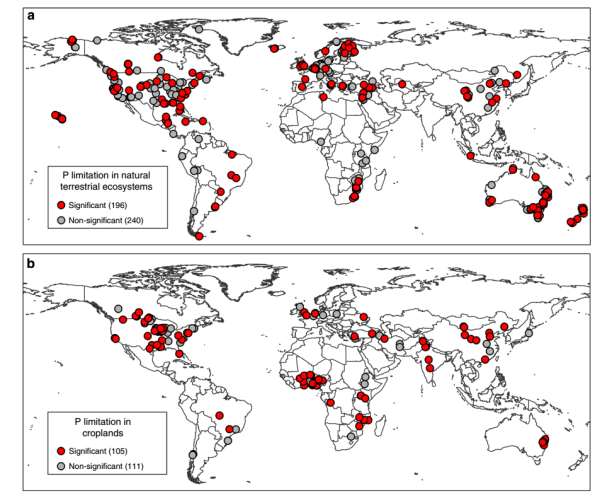Researchers from SCBG reveal the global pattern of phosphorus limitation on terrestrial natural ecosystems
In terrestrial ecosystems, nitrogen (N) and phosphorus (P) have been considered as the most important limiting nutrients of aboveground plant production. P limitation, however, is usually assumed to occur mainly in the strongly weathered lowland tropical regions but rarely elsewhere. Here we report that such P limitation is more widespread and much stronger than previously estimated. In our global meta-analysis, almost half (46.2%) of 652 P-addition field experiments reveal a significant P limitation on aboveground plant production.
Globally, P additions increase aboveground plant production by 34.9% in natural terrestrial ecosystems, which is 7.0–15.9% higher than previously suggested. In croplands, in contrast, P additions increase aboveground plant production by only 13.9%, probably because of historical fertilizations. The magnitude of P limitation also differs among climate zones, regions, and is driven by climate, ecosystem properties, and fertilization regimes.
In addition to confirming that P limitation is widespread in tropical regions, our study demonstrates that P limitation often occurs in other regions. This suggests that previous studies have underestimated the importance of altered P supply on aboveground plant production in natural terrestrial ecosystems.
The results from this work have been published in Nature Communications, for further reading please refer to: https://doi.org/10.1038/s41467-020-14492-w.

Figure 1. Locations of the 652 experiments in which the effect of P addition on aboveground plant production was assessed.
File Download: